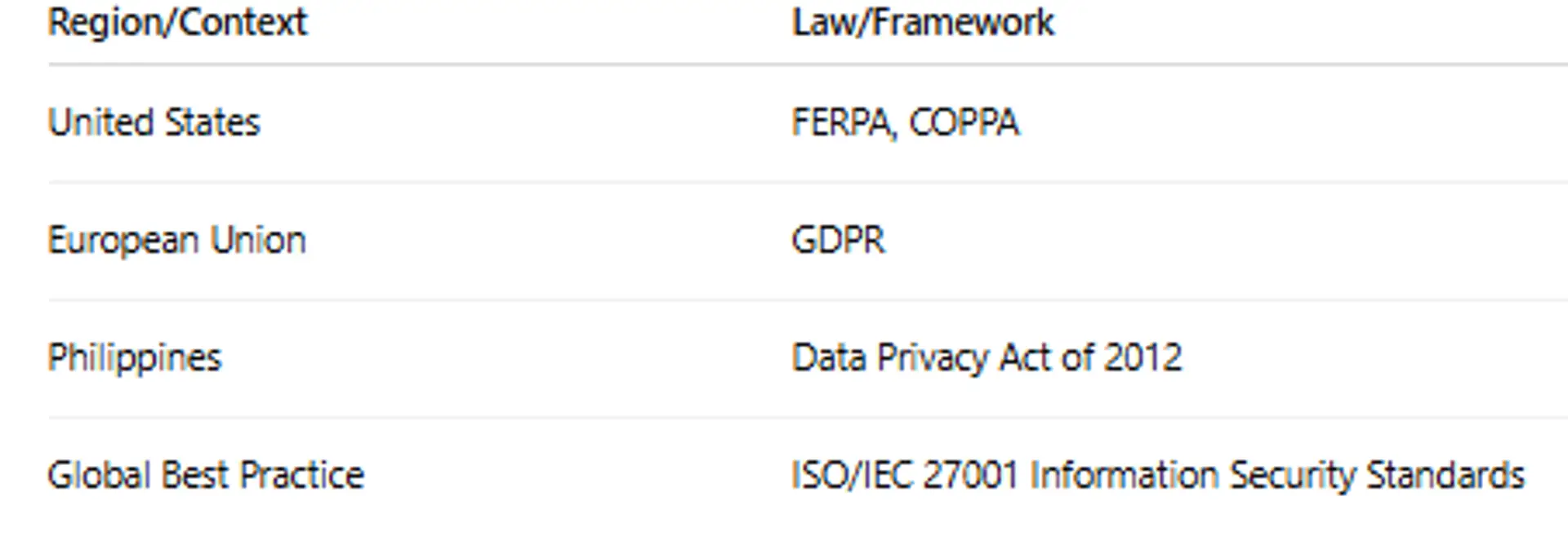

Module 7: Ethical, Safe, and Responsible AI Use Lesson 7.1: Bias, Fairness & Data Privacy Issues in Educational AI
Module 7: Ethical, Safe, and Responsible AI Use
Lesson 7.1: Bias, Fairness & Data Privacy Issues in Educational AI
Learning Objectives
By the end of this lesson, educators will be able to:
- Define algorithmic bias and explain how it appears in educational technologies.
- Identify how AI learning models can unintentionally disadvantage certain student groups.
- Understand core data privacy responsibilities when using AI tools in schools.
- Assess whether educational AI tools meet fairness, transparency, and privacy standards.
- Apply strategies to use AI responsibly while protecting student rights and supporting equitable learning.
1. Understanding Algorithmic Bias in Education
Algorithmic Bias is when an AI system consistently produces outcomes that are unfair or favor certain groups of students over others.
AI learns from data patterns.
If the data contains bias → the AI learns and repeats the bias.
Examples of unintentional bias:

Key Insight:
Bias isn’t caused by malicious intent — it is caused by what the AI was trained on.
Because of this, teachers must remain the final evaluators of learning.
2.Promoting Fairness in AI-Supported Classrooms
Fair AI use ensures that:
- Students receive equal access to support and instructional feedback.
- Language, culture, socioeconomic background, or disability do not disadvantage student learning experiences.
- AI recommendations are discussed, not blindly followed.
Practical Fairness Strategies for Educators:

Fairness is achieved when AI enhances equity, not uniformity.
3. Data Privacy Responsibilities
AI tools often handle student data such as:
- Names, demographics, attendance
- Writing samples and assignments
- Learning performance and behavior metrics
This data must be handled according to legal privacy standards.
Relevant Privacy Laws & Frameworks:

Privacy Best Practices for Teachers:
- Collect only necessary data (avoid oversharing student details).
- Review app privacy policies before introducing tools to the class.
- Do not upload student work into public AI models without consent.
- Use school-approved accounts instead of personal logins.
- Delete exported student data once no longer needed.
You are not just a teacher — you are the data guardian for every student.
4. Responsible Use Guidelines for Classroom AI

Responsible AI use = Teacher Leadership + AI Assistance
5. Key Takeaway
AI is a powerful instructional tool — but not inherently fair or neutral.
Its fairness depends on the data used and the educator who guides its use.
Teachers must:
- Monitor AI outputs
- Protect student data
- Promote transparency
- Ensure equitable learning access
AI can support better learning outcomes only when educators remain in control of decisions and interpretation.
6.Supplementary Resources
- UNESCO AI Competency Framework for Teachers
- Algorithmic bias explained
- 240. AI Principles from the OECD
Lesson 7.1 Quiz — Bias, Fairness & Data Privacy (10 Multiple Choice)
You must score at least 70% to pass.
This quiz counts toward your certification progress.
Click here for Quiz 7.1:
Conclusion
AI has the potential to improve learning, reduce administrative burdens, and support personalized instruction — but only when implemented thoughtfully. Because AI systems reflect the data and patterns they are trained on, educators must stay actively involved, verifying outputs, advocating fairness, and safeguarding student privacy. With awareness and ethical use, AI can help build classrooms that are more inclusive, equitable, and empowering for every student.
Next and Previous Lesson
Next: lesson 7.2: What Teachers Should NOT Upload to AI Tools
Previous: Lesson 6.4: AI for Class Productivity & Communication
AI for Educators: Personalized Learning & Content Creation
Related Posts
© 2025 Invastor. All Rights Reserved

User Comments